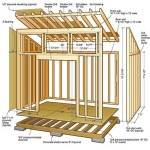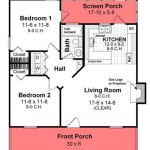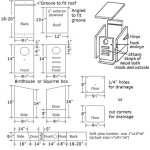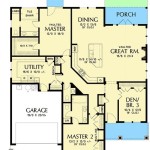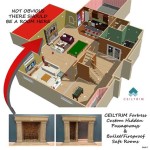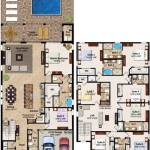Spanish House Plans refer to architectural designs for constructing houses that incorporate elements of traditional Spanish architecture. These plans are characterized by their distinctive features, which draw inspiration from the rich cultural heritage of Spain.
Spanish House Plans often showcase a combination of warm and inviting courtyards, arches, balconies, and decorative details. The use of terracotta tiles, wrought iron fixtures, and intricate tilework adds to the authentic ambiance of these designs. One notable example is the iconic “California Spanish” style, which emerged during the early 20th century and blended Spanish influences with American sensibilities.
In the following sections, we will explore the various elements and design principles that define Spanish House Plans. From the practical aspects of layout and functionality to the aesthetic appeal of architectural details, we will provide insights into the unique characteristics that make these plans a popular choice for homeowners seeking a blend of charm, tradition, and timeless elegance.
Spanish House Plans are characterized by distinct architectural elements that blend traditional Spanish influences with modern living.
- Courtyards and Patios
- Arches and Vaulted Ceilings
- Balconies and Terraces
- Terracotta Tiles and Stonework
- Wrought Iron Fixtures
- Ornate Tilework
- Stucco and Plaster Walls
- Spacious and Open Interiors
- Focus on Natural Light
These elements combine to create homes that are both visually appealing and functional, offering a unique blend of charm and modern amenities.
Courtyards and Patios
Courtyards and patios are central features of Spanish House Plans, providing a seamless connection between indoor and outdoor living. These open-air spaces serve as natural extensions of the home, offering a private oasis for relaxation and entertaining.
Courtyards are typically enclosed by the house on all sides, creating a secluded and intimate setting. They often feature lush landscaping, fountains, and comfortable seating areas, inviting residents to unwind and enjoy the tranquility of their surroundings. Patios, on the other hand, are partially enclosed spaces that are typically located adjacent to the house. They may be covered or uncovered, and often feature outdoor kitchens, fireplaces, and dining areas, making them ideal for al fresco gatherings.
Both courtyards and patios play a crucial role in regulating temperature within Spanish House Plans. During warm weather, these open-air spaces provide natural ventilation, allowing cool air to circulate throughout the home. In colder months, courtyards and patios can be enclosed with retractable screens or glass panels, creating a cozy and sun-filled space that extends the living area.
The incorporation of courtyards and patios in Spanish House Plans not only enhances the aesthetic appeal of the home but also promotes a harmonious indoor-outdoor lifestyle. These spaces provide residents with a private sanctuary where they can connect with nature, entertain guests, or simply relax and recharge.
Arches and Vaulted Ceilings
Arches and vaulted ceilings are prominent architectural features in Spanish House Plans, adding a touch of grandeur and spaciousness to the interior. Arches are curved openings that can be used to create doorways, windows, and decorative elements, while vaulted ceilings are ceilings with a curved or arched shape.
Arches in Spanish House Plans are often made of brick, stone, or wood, and can be either pointed or rounded. Pointed arches are commonly associated with Gothic architecture, while rounded arches are more characteristic of Romanesque and Moorish styles. Arches not only enhance the aesthetic appeal of a space but also serve a structural purpose, effectively distributing weight and creating stability.
Vaulted ceilings add height and drama to Spanish House Plans. Barrel vaults, which are continuous curved ceilings resembling a half-cylinder, are a common feature in many Spanish-style homes. Groin vaults, formed by the intersection of two barrel vaults, are another popular choice, creating a visually striking and intricate ceiling design. Vaulted ceilings not only add a sense of spaciousness but also improve acoustics, reducing echo and reverberation within the home.
The combination of arches and vaulted ceilings in Spanish House Plans creates a harmonious and inviting atmosphere. Arches provide a graceful transition between different spaces, while vaulted ceilings add a touch of grandeur and elegance. These architectural elements are not only visually appealing but also contribute to the overall functionality and comfort of the home.
In addition to their aesthetic and structural benefits, arches and vaulted ceilings also play a role in regulating temperature within Spanish House Plans. The curved surfaces of these elements help to circulate air more effectively, reducing the need for artificial cooling or heating systems. This passive climate control contributes to the energy efficiency and sustainability of Spanish-style homes.
Balconies and Terraces
Balconies and terraces are extensions of the living space in Spanish House Plans, providing outdoor areas for relaxation, dining, and entertaining. Balconies are typically smaller than terraces, and they project from the exterior wall of the house, often above the ground floor. Terraces, on the other hand, are larger, elevated outdoor spaces that are often located at the rear of the house and can be accessed from multiple rooms.
Balconies in Spanish House Plans are often adorned with wrought iron railings or balustrades, adding a touch of elegance and architectural interest. They provide a private outdoor space for residents to enjoy the fresh air and views, and can also be used for growing plants or herbs. Balconies are particularly useful in urban areas, where outdoor space is limited.
Terraces in Spanish House Plans are larger and more versatile than balconies, offering a variety of uses. They can be furnished with outdoor furniture, creating a comfortable and inviting space for entertaining guests or simply relaxing outdoors. Terraces are also ideal for outdoor dining, as they often feature built-in barbecue grills or fireplaces. Some terraces may also be covered with a pergola or awning, providing shade and protection from the elements.
One of the key advantages of balconies and terraces in Spanish House Plans is their ability to extend the living space outdoors. They provide a seamless transition between indoor and outdoor living, allowing residents to enjoy the benefits of both. Balconies and terraces also increase the overall value and appeal of a home, offering additional space and functionality.
In summary, balconies and terraces are essential elements of Spanish House Plans, providing outdoor living areas that enhance the functionality and enjoyment of the home. They offer private spaces for relaxation, entertaining, and al fresco dining, while also adding architectural interest and value to the property.
Terracotta Tiles and Stonework
Terracotta tiles and stonework are two essential elements that contribute to the distinctive character of Spanish House Plans. These materials have been used in Spanish architecture for centuries, and they continue to be popular choices for modern homes that seek to capture the charm and elegance of traditional Spanish design.
- Terracotta Tiles:
Terracotta tiles are a type of ceramic tile made from fired clay. They have a warm, earthy color that ranges from reddish-brown to orange. Terracotta tiles are commonly used for roofing, flooring, and exterior cladding in Spanish House Plans. They are durable, weather-resistant, and relatively easy to maintain. Terracotta tiles also have excellent thermal properties, helping to keep homes cool in the summer and warm in the winter. - Stonework:
Stonework is another important element of Spanish House Plans. Stone is a natural material that can be used for a variety of purposes, including building walls, creating patios and walkways, and constructing decorative elements such as fountains and sculptures. Stonework adds a touch of rustic charm and authenticity to Spanish-style homes. It is also a durable and low-maintenance material that can withstand the elements and last for many years.
The combination of terracotta tiles and stonework creates a cohesive and visually appealing exterior for Spanish House Plans. These materials complement each other well, and they can be used to create a variety of different looks, from traditional to contemporary. Terracotta tiles and stonework also add value and character to a home, making them a worthwhile investment for homeowners who are looking to create a unique and stylish living space.
Wrought Iron Fixtures
Wrought iron fixtures are a defining characteristic of Spanish House Plans, adding a touch of elegance and authenticity to these homes. Wrought iron is a type of iron that has been heated and hammered into shape, making it both strong and malleable. It is commonly used to create a variety of decorative and functional elements in Spanish-style homes, including:
- Balconies and Railings: Wrought iron balconies and railings are a common feature in Spanish House Plans. They provide a secure and decorative way to enclose balconies and terraces, while also adding a touch of architectural interest. Wrought iron railings can be intricate and elaborate, or they can be simple and understated, depending on the overall style of the home.
- Gates and Fences: Wrought iron gates and fences are another popular choice for Spanish House Plans. They provide security and privacy, while also adding a decorative element to the home’s exterior. Wrought iron gates can be large and imposing, or they can be smaller and more delicate, depending on the desired effect.
- Light Fixtures: Wrought iron light fixtures are a beautiful and functional addition to Spanish House Plans. They can be used to create a variety of different lighting effects, from ambient to task lighting. Wrought iron light fixtures can be simple and understated, or they can be elaborate and ornate, depending on the overall style of the home.
- Furniture and Accessories: Wrought iron furniture and accessories can add a touch of Spanish flair to any room. Wrought iron beds, chairs, tables, and mirrors are all popular choices for Spanish House Plans. These pieces can be simple and rustic, or they can be more elaborate and ornate, depending on the desired effect.
Wrought iron fixtures are a versatile and durable material that can be used to create a variety of different looks in Spanish House Plans. They are a key element in achieving the authentic Spanish style, and they can add a touch of elegance and charm to any home.
Ornate Tilework
Ornate tilework is a hallmark of Spanish House Plans, adding a touch of color, pattern, and texture to these homes. Tiles have been used in Spanish architecture for centuries, and they continue to be a popular choice for modern homes that seek to capture the charm and elegance of traditional Spanish design.
Spanish tiles are typically made of ceramic or terracotta, and they come in a variety of shapes, sizes, and colors. They are often hand-painted with intricate designs, which can range from simple geometric patterns to elaborate floral motifs. Tiles can be used to create a variety of different looks, from traditional to contemporary, and they can be used both indoors and outdoors.
One of the most popular uses of tiles in Spanish House Plans is for flooring. Tile floors are durable, easy to clean, and resistant to moisture, making them ideal for high-traffic areas such as kitchens and bathrooms. Tiles can also be used to create beautiful accent walls, backsplashes, and countertops. In addition, tiles can be used to create decorative elements such as fountains, benches, and planters.
Ornate tilework is a versatile and durable material that can be used to create a variety of different looks in Spanish House Plans. It is a key element in achieving the authentic Spanish style, and it can add a touch of elegance and charm to any home.
Here are some specific examples of how ornate tilework can be used in Spanish House Plans:
- Flooring: Tile floors are a popular choice for Spanish House Plans, and they can be used to create a variety of different looks. For example, a simple square tile in a neutral color can create a classic and understated look, while a more elaborate tile with a colorful pattern can create a more dramatic and eye-catching look.
- Accent Walls: Tile can also be used to create beautiful accent walls in Spanish House Plans. For example, a wall of brightly colored tiles can be used to add a splash of color to a kitchen or bathroom, while a wall of tiles with a more subdued pattern can be used to create a more sophisticated look in a living room or dining room.
- Backsplashes: Tiles are also a popular choice for backsplashes in Spanish House Plans. A backsplash of tiles can help to protect the wall from splashes and spills, and it can also add a touch of style to the kitchen. Tiles can be used to create a variety of different looks for backsplashes, from simple and understated to elaborate and ornate.
- Countertops: Tiles can also be used to create beautiful and durable countertops in Spanish House Plans. Tile countertops are resistant to heat, stains, and scratches, making them a good choice for busy kitchens. Tiles can be used to create a variety of different looks for countertops, from simple and understated to elaborate and ornate.
Stucco and Plaster Walls
Stucco and plaster walls are common features in Spanish House Plans, adding a touch of texture and warmth to these homes. Stucco is a type of exterior finish that is made from a mixture of cement, sand, and lime. It is applied to the exterior walls of a home in a wet state, and it hardens over time to create a durable and weather-resistant surface.
Plaster is a similar material to stucco, but it is used for interior walls and ceilings. It is made from a mixture of gypsum, lime, and water, and it is applied to the walls in a wet state. Plaster dries to a smooth and hard surface, and it can be painted or decorated in a variety of ways.
Stucco and plaster walls are both durable and easy to maintain, making them a good choice for busy families. They are also fire-resistant and can help to insulate the home, making them more energy-efficient.
In addition to their practical benefits, stucco and plaster walls also add a touch of style to Spanish House Plans. Stucco walls can be textured or smooth, and they can be painted in a variety of colors to create a variety of different looks. Plaster walls can be painted or decorated with murals or other artwork, making them a versatile option for homeowners who want to add a personal touch to their home.
Spacious and Open Interiors
Spacious and open interiors are a hallmark of Spanish House Plans, creating a sense of grandeur and inviting a seamless flow of movement throughout the home. This design approach emphasizes:
- Large, Open Floor Plans: Spanish House Plans often feature large, open floor plans that combine multiple living areas, such as the living room, dining room, and kitchen, into one expansive space. This creates a sense of spaciousness and allows for easy movement and interaction between different parts of the home.
- High Ceilings: High ceilings are another common feature of Spanish House Plans, contributing to the feeling of spaciousness and grandeur. They create a sense of vertical space and make the rooms feel more airy and inviting.
- Abundant Natural Light: Spanish House Plans prioritize natural light, featuring large windows and doors that allow ample sunlight to flood the interior spaces. This creates a bright and cheerful atmosphere and helps to reduce the need for artificial lighting.
- Indoor-Outdoor Connection: Many Spanish House Plans seamlessly connect the indoor and outdoor living areas through the use of patios, courtyards, and balconies. This integration of indoor and outdoor spaces creates a sense of spaciousness and invites the natural surroundings into the home.
The combination of these elements creates spacious and open interiors that are both inviting and functional. They provide ample room for entertaining guests, family gatherings, and everyday living, while also fostering a sense of connection to the outdoors.
Focus on Natural Light
Spanish House Plans prioritize natural light as a key element in creating inviting and comfortable living spaces. This focus on natural illumination is achieved through several design strategies:
Large Windows and Doors: Spanish House Plans typically feature large windows and doors that allow ample sunlight to enter the interior. These openings are strategically placed to maximize natural light throughout the day, reducing the need for artificial lighting and creating a bright and airy atmosphere.
Courtyards and Patios: Courtyards and patios are common features in Spanish House Plans, serving as extensions of the living space and providing additional sources of natural light. These outdoor areas often feature large windows or openings that allow sunlight to penetrate deep into the home, illuminating interior spaces and creating a sense of openness.
Skylights and Clerestory Windows: Skylights and clerestory windows are incorporated into Spanish House Plans to introduce natural light into areas that may not have direct access to windows. Skylights are installed on the roof, allowing sunlight to filter down into the interior, while clerestory windows are placed high on the walls, providing indirect light and reducing glare.
Light-Colored Interiors: Spanish House Plans often use light-colored interiors to reflect and amplify natural light. White or off-white walls, ceilings, and flooring help to bounce light around the room, creating a brighter and more spacious feel. This use of light colors enhances the overall illumination and reduces the need for artificial lighting.
The emphasis on natural light in Spanish House Plans not only creates a more inviting and comfortable living environment but also provides several practical benefits. Natural light has been shown to improve mood, boost energy levels, and promote overall well-being. Additionally, it can reduce eyestrain and headaches associated with prolonged use of artificial lighting.










Related Posts

